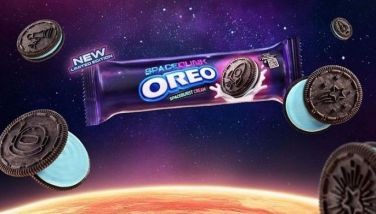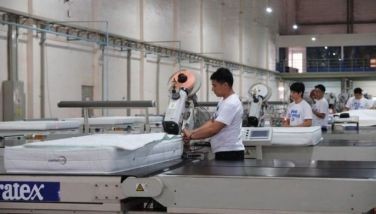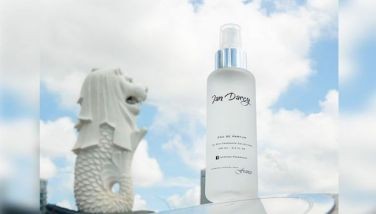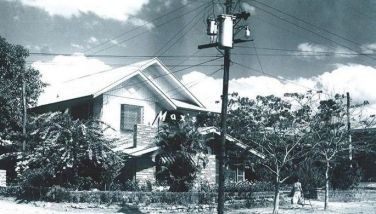That '70s show
BLACK HOLE
By Charles Burns
Available at National Book Store
Anyone who’s ever perused a ’70s high school yearbook knows it can be a disturbing experience: kids with feathered hair à la Shaun Cassidy or Farrah Fawcett; sweater vests over collared shirts; thin, feathery moustaches; acne and bad eyeglasses. And that’s just my yearbook photo.
But take a peek at Charles Burns’ ‘70s yearbook — the front and back jacket of Black Hole, his award-winning graphic novel from 2010 — and you come face to face with mutants: kids with smiling visages on one side; then those faces taken over by pustules and pockmarks, antennae and skin tags on the back side. It’s a freak show, in other words. And so was the ‘70s, in a lot of ways.
 Raw power: Charles Burns’ art is febrile, feverish; his drawings seem to sweat, somehow.
Raw power: Charles Burns’ art is febrile, feverish; his drawings seem to sweat, somehow. Charles Burns made a name as an illustrator of Raw comic magazine back in the ‘80s. This is his first graphic novel. His drawings are, indeed, raw: noir-lit block-cut images of people with feverish, feral conditions. He’s also illustrated a few album covers (including Iggy Pop’s “Brick By Brick”) and you might have seen his drawings decorating the occasional Time magazine article, or in those Altoids ads. It’s a strange, disturbing visual style, merging ‘50s radiation fears and noir film paranoia with a modern apocalyptic feel. His drawings seem to sweat, somehow.
Black Hole is kind of like the last few minutes of that Soundgarden video, Black Hole Sun, just at the moment where everyone’s face starts to distort and everything begins to melt. It takes place in the Seattle ‘70s, against a backdrop of Emerson Lake & Palmer, Bowie’s “Diamond Dogs” and endless partying. It concerns high school kid Keith and his fatal attraction to Chris, a cool chick who has a thing for another guy, Rob.
Keith starts to space out in Chapter 1, as he prepares to dissect a frog in biology class. The opening in the frog’s belly seems to lead him down some Lynchian rabbit hole: he finds himself tumbling into a black void, where people have large openings in their backs, throats and feet and snakes have human heads. It feels “safe and nice” to him, somehow.
Meanwhile, Chris goes all the way with Rob after a weekend party, and only afterward realizes that he’s got a tiny second mouth that opens up in is throat during sex. (He had tried to warn Chris about this little condition, but she said she knew all about him and didn’t care; so they just shrug and carry on.)
It soon becomes apparent that Rob isn’t the only one with a weird mutation. A sexual plague has descended on Seattle, and the mutants either live among the people there, concealing their condition, or become ostracized enough to take up camp in a hilly forest outside the city limits.
What’s interesting about Black Hole is that Burns has us take the mutation thing for granted: there’s no explanation for why kids are growing feline features, horns, skull-like faces or wriggly tails; everyone just seems to know about it — parents seem oblivious, and kids carry on living their wasted, directionless lives. These really are the kids of Generation X: unnamed, undefined, without any grand political or social cause to rally around; just killing time or waiting for time to take its toll.
The mutations are spread sexually, so the implication is that these horrible afflictions are somehow a by-product of the “sex, drugs and rock ‘n’ roll” lifestyle of the ‘70s. Burns captures the pulsating paranoia of a decade just before AIDS: kids worrying about catching “the bug” — or worse, turning into a bug, like some overwrought sci-fi flick from the ‘50s, or the kind of public service films they used to show high school kids about venereal disease, Black Hole conjures up the fears that went along with the confusion and misdirection of that era.
But Black Hole also has characters you care about, and their sci-fi fates eventually seem as real and affecting as any other teenage wasteland you can imagine.
Plus, the dialogue’s sharp and reflective of a pop culture that anyone who had even one foot in the ‘70s will remember. Tiny details — like the plastic cup from a Herfy’s Drive-Through, Snickers bar wrappers or Kool menthol cigarettes — become strangely evocative and universal, rendered in Burns’ odd woodcut style with its chiseled negative space and flickering highlights.
Black Hole is not an easy read, though it is a quick one. Some 300 to 400 pages fly by in a day or so, as you become engrossed in Burns’ alternate reality, one that is often poetic and yearning, and full of Lynchian shocks. What’s surprising is that it is also beautiful, despite the lurid, overly graphic details, the trails of debris and detritus. Wasn’t it Thelonious Monk who wrote a lurching piano ballad called Ugly Beauty? He could have soundtracked Burns’ book.
Amid all the flotsam and jetsam, these kids are pining for a clean break, a second chance at their lives. Somehow, amid all the black hole emptiness they see around them, Burns also allows them to see a little light at the end of the abyss.
















